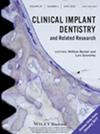Enhancing Implant Prosthodontics: In Vitro Accuracy of Coded Healing Abutments on the Edentulous Lower Jaw
Abstract
Objective
This study aimed to investigate the accuracy of conventional and digital impression-making and cast-fabrication using coded healing abutments on an edentulous mandibular model under in vitro conditions.
Materials and Methods
Our study investigated the accuracy of the On1 Concept (Nobel Biocare; Kloten, Switzerland) coded healing abutment system using conventional and digital workflows. The Conical Connection (CC) system (Nobel Biocare; Kloten, Switzerland) was used as the control group in both workflows. 10–10 open-tray impressions and intraoral scans were made from the reference model with each system. Models built from intraoral scans were additively fabricated, and open-tray impressions were poured with type-4 dental stone. The prepared models were digitized using a desktop scanner with an accuracy of 4 μm (E4, 3Shape; Copenhagen, Denmark) and superimposed on the reference scan. Four linear distances and root mean square (RMS) deviations were measured using metrology software.
Results
Five dimensions were measured using signed and absolute deviations, resulting in nine outcomes. RMS and diagonal deviations provided the most insight into overall model deviations. Mean RMS deviations were: 58.30 (14.95) μm for CC_conv, 47.66 (13.04) μm for On1_conv, 204.97 (37.40) μm for CC_dig, and 136.64 (13.49) μm for On1_dig. Significant differences were found between On1_conv vs. CC_dig, On1_conv vs. On1_dig, and CC_conv vs. CC_dig. Mean linear deviations between the molar positions were: 24.49 (58.20) μm for CC_conv, 87.46 (106.70) μm for On1_conv, −104.76 (125.83) μm for CC_dig, and 140.64 (190.56) μm for On1_dig. Significant differences were observed between On1_conv vs. CC_dig and CC_dig vs. On1_dig.
Conclusions
Based on the RMS deviations, the conventional method is significantly more accurate at both implant and platform levels in the case of an in vitro edentulous lower jaw model. The RMS deviations of the implant analogs are smaller on the platform level with both conventional and digital methods.


 求助内容:
求助内容: 应助结果提醒方式:
应助结果提醒方式:


